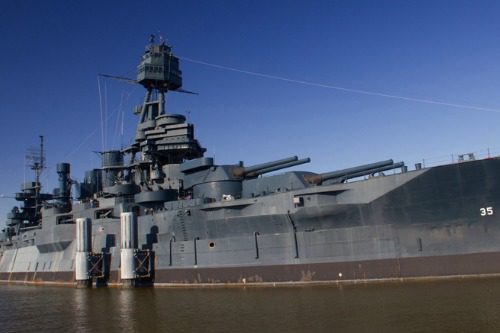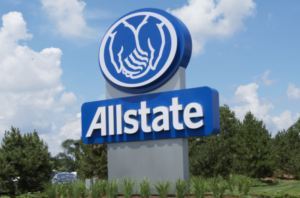How to move a battleship

Authored by Jarek Klimczak, Senior Risk Consultant, Marine, AXA XL
The USS Texas, also known as Battleship Texas, is the last of its kind.
Built in 1911 and commissioned in 1914, it’s the only surviving Dreadnought – a type of battleship introduced early in the 20th century that was larger and faster than its predecessors and equipped entirely with large-caliber guns. It’s also the only existing battleship that served in both world wars.
The USS Texas may be “last” but saw many “firsts” during its 111-year history. It was a technological testbed: the first US battleship to mount anti-aircraft guns, the first US ship to control gunfire with directors and range-keepers, the first US battleship to launch an aircraft, and one of the first US Navy ships to receive production radar.
After decommissioning in 1948, Texas was the first US battleship to become a permanent museum ship and a US National Historic Landmark.
The ship’s rusty, leaky hull jeopardized its future status as anything but potential scrap. Thanks to the Battleship Texas Foundation, however, the ship’s legacy will be preserved for future generations.
Planning the journey
On August 31, 2022, with much media and local fanfare, the USS Texas travelled 40-miles from its berth at San Jacinto Battleground State Historic Site near La Porta, a Houston suburb to the Gulf Copper Shipyard in Galveston, Texas. After completing $35 million in much-needed repairs, the foundation will move the ship to another location, with the prospect of generating more visitors and revenue.
Given the condition of the 111-year-old vessel, the move required careful planning. If not properly executed, the ship could have been a total loss. It was a risky journey for many reasons. For one, silt could have been a potential problem. As the ship had been moored for so long, the bottom of the hull could potentially be silted in and unable to move. Silt already proved an issue when the ship was sent for repair in 1989.
Preparation for the move began as far back as 2019, beginning with a salvage survey to assess the condition of the hull and pinpoint weak spots. Teams went through some 37 compartments removing debris, relocating loose original components to centralized storage locations on the ship, and strapping in loose original furniture and equipment. (To read more about the prep work that went into the move, the Battleship Texas Foundation provided regular updates of their activities.
Lessoned learned in 1989
Typically, active trading vessels are drydocked every five years to perform repairs and maintenance. Since becoming a museum in 1948, USS Texas deteriorated badly over 35 years and a dry docking was planned for 1983. Because of the ship’s weakening structural integrity and leaking hull plating, however, dry-docking was postponed from December 1988 to February 1990.
The towage had significant hiccups. On December 13, 1989, at 6 a.m. tugboats began tying up to the stern and pulled, but the ship did not budge. The vessel was being held in her berth by 40 years of silt that had washed into the berth and piled up around the hull.
Additional tugboats were brought in. Eventually, six tugs with 25,000 HP were pulling on the lines with their propeller wash blowing away the silt from the hull. One tug blew an engine and one tow line broke with the sound a high-powered hunting rifle firing. By 1:13 p.m., however, the tugboats finally pulled the vessel from its berth into the ship channel. (Read more about that journey here.)
Given this experience, the foundation took additional precautions to ensure a smoother journey to Galveston.
The risks of towing a dead ship
The USS Texas is considered a “dead” ship, meaning there are no power, food, supplies and crew. According to the U.S. Coast Guard (USCG), “a dead ship tow evolution consists of a towing vessel(s) moving a ship greater than 100GT that is not under its own command and not using its own propelling machinery.”
Towing a dead ship can be tricky. Many harbors/ports, including the USCG, offer specific dead tow guidelines to help in the planning of a dead tow and to boost safety in reducing the risk of vessel accidents.
Any ship which moves usually has a Captain on board to make decisions, but not a dead tow, where the owner may decide to appoint a Special Casualty Representative (SCR) to oversee the towage.
For the USS Texas, the tow was performed with local pilots from Houston and Galveston. The ship had pilots on board as advisors. Each group had two pilots – one onboard the Battleship and one on the lead tug. The tug owners had a representative onboard the Battleship during tow as well. The pilots and tugs are charged with the task of physically towing the vessel and the salvage contractor is charged with keeping the ship safely afloat during the voyage.
The tow occurred in sheltered waters with minimal expected wind and currents. The USCG and Vessel Traffic System implemented a Category I closure for deep draft vessels during the voyage.
Keeping it all together (and above water)
Some leaks were difficult to contain, which necessitated installing numerous pumps and sealing the hull with foam. During the journey, workers at times were forced to pump out ~2,000 gallons (7,570 liters) of water per minute. These pumps are powered by portable generators with sufficient redundancy should one or more fail along the way. Backup power was also on hand.
The vessel was in natural “hogging”, which meant it was bent upward along its length. For the purpose of towing, however, the intention was to minimize the hog and alleviate potential bending forces. This is usually done by pumping water into specific ballast tanks, decreasing bending forces along the hull, but creating an adverse reduction in buoyance should any crack or impairment in the hull occur.
The ship’s move was also heavily reliant on favorable wind and wave conditions. The tow could not exceed critical value parameters, primarily to allow tugs to move the ship along, but also not to create any additional forces on the hull.
A risky operation
Because of these precautions, the ship performed far beyond expectations. On the night of August 31, the USS Texas was lifted out of the water by the dry dock, bringing this phase of the project to a close. Battleship Texas is now out of the water for the first time in 32 years.
Dry-docking is a risky operation. During the process of settling in on the keel-blocks, the vessel is losing a buoyancy and stability. Unskillful docking may lead to capsizing before settling on the blocks. If not properly executed, the operation also could have created an adverse longitudinal ‘bending’ moment, which might have disintegrated a weakened hull.
Enlisting maritime risk experts to help
Wise risk management practices were an important part of the journey. AXA XL’s Risk Consulting reviewed all documents, including compressive hydrostatic documentation, previous survey reports, feasibility study for towage, stability calculation and towing arrangements. As another “set of eyes”, our Risk Consulting team asked critical questions to avoid problems along the way. This included assessing the capacity of connecting points on deck for towage lines and shackles and assuring that all safety measures were in place.
Preserving historical relics like the USS Texas play a vital role in learning about and from our past. Fortunately, proper planning and risk management made way for the ship’s safe arrival to dry dock where it will be repaired and preserved for future generations.





